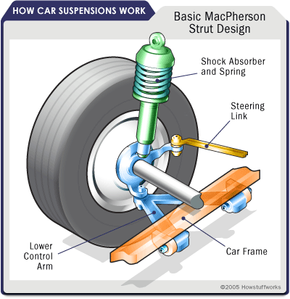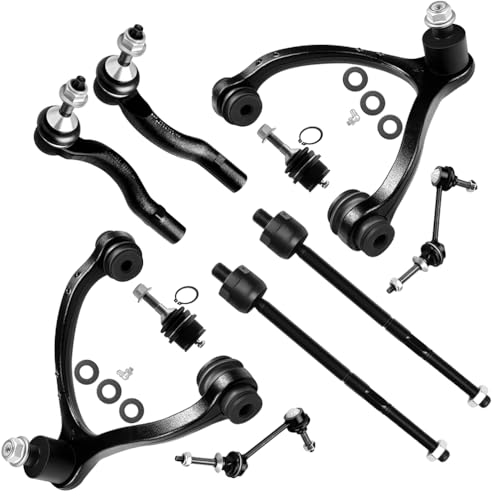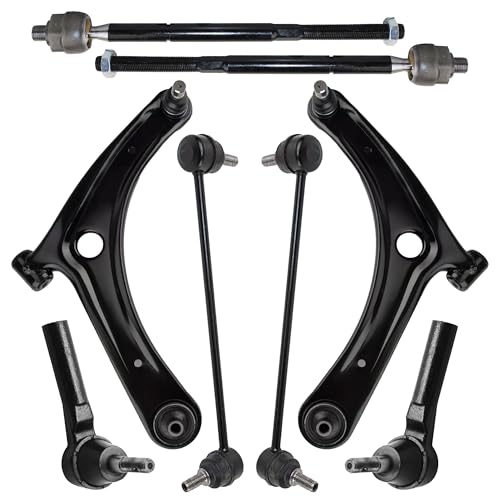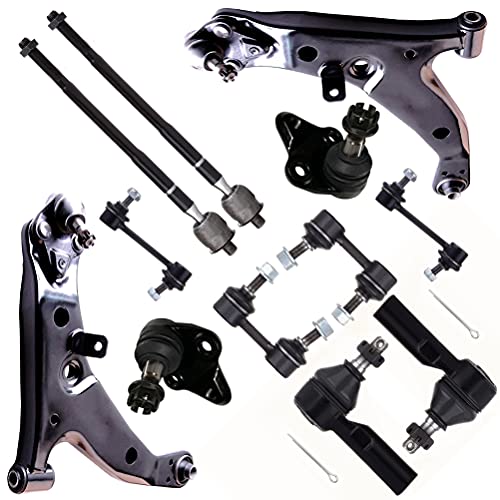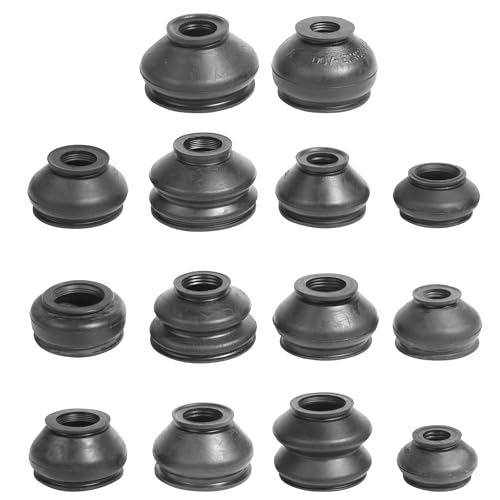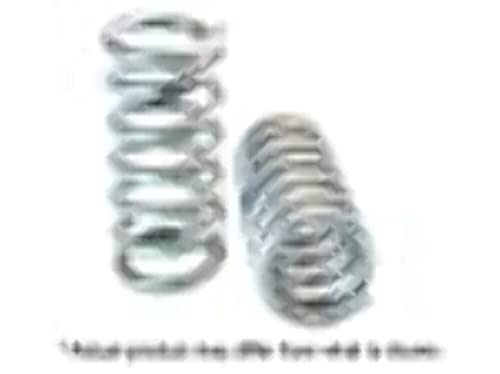Ever felt that jarring thud driving over a pothole or noticed your car doesn’t handle turns as gracefully as it used to? These are common experiences that point directly to a critical, yet often misunderstood, part of your vehicle. You’re likely wondering not just what is suspension of a car, but why it’s so vital for your safety and comfort on the road.
A car suspension is the system of tires, springs, shock absorbers, and linkages that connects a vehicle to its wheels. Its primary job is to absorb bumps for a smooth ride and keep the tires firmly on the road for safe handling, steering, and braking.
Leveraging extensive analysis of automotive engineering principles and performance data, this guide breaks down the complex world of car suspension into simple, understandable concepts. We will explore exactly what it is, why it’s one of the most important safety features in your vehicle, the key components that make it work, and the warning signs you should never ignore.
What Is Car Suspension? A Simple Guide to How It Works
A car’s suspension system is the intricate network of components that connects the vehicle’s frame to its wheels, including tires, springs, shock absorbers, and various connecting linkages. Its main purpose is to manage the two competing forces of road comfort and handling performance. Think of it as the car’s knees and elbows, absorbing the shocks of the road so the ride isn’t bumpy while also keeping you stable and in control. This system works tirelessly to maximize the friction between your tires and the road surface, which is essential for safe driving.
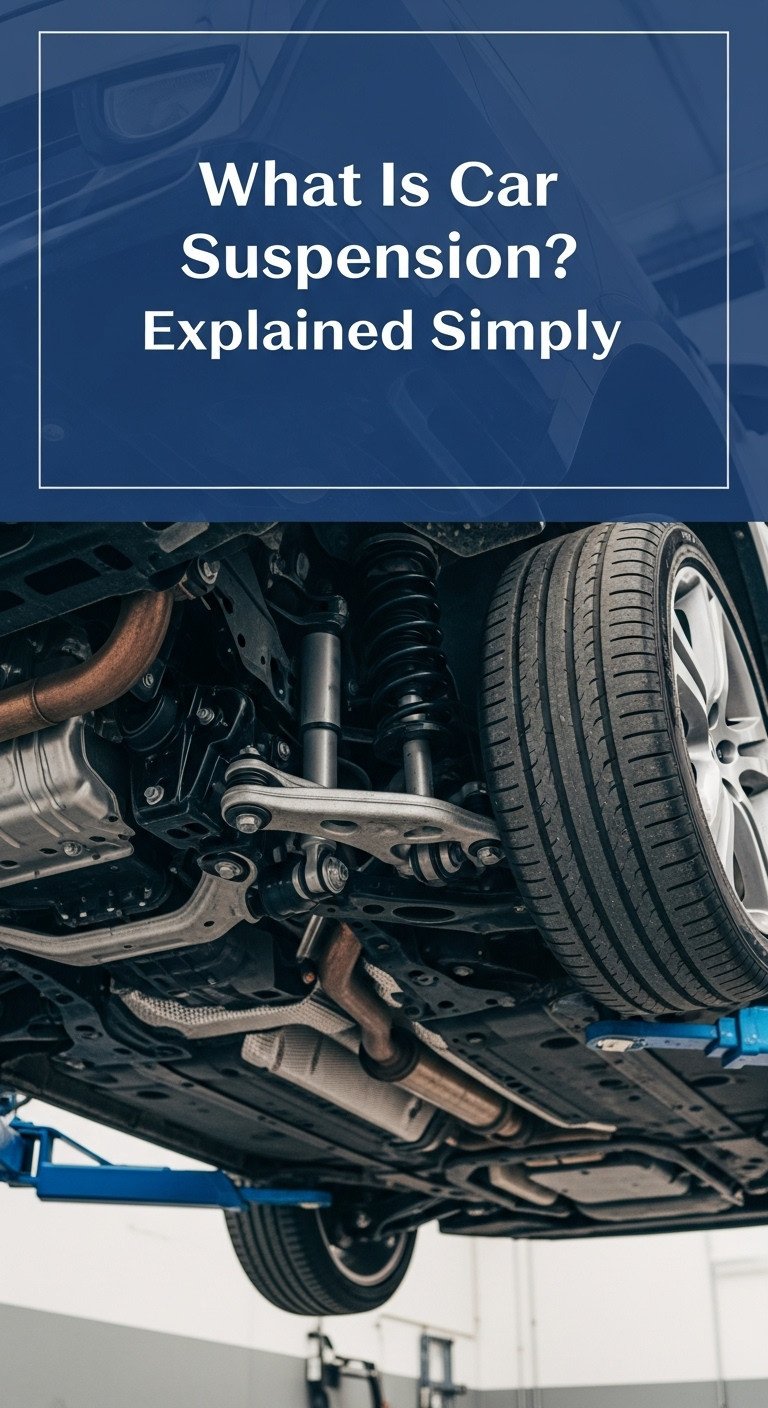
The suspension system accomplishes this through three primary functions:
- Absorbing Bumps: The springs in the system compress and expand to soak up the energy from potholes and uneven surfaces, isolating the cabin and passengers from harsh impacts.
- Controlling Movement: The shock absorbers (or dampers) manage the energy stored in the springs, preventing the car from bouncing uncontrollably after hitting a bump.
- Connecting Components: A series of linkages, arms, and joints holds everything together, allowing the wheels to move up and down independently while remaining firmly connected to the vehicle for steering and control.
Why Your Car’s Suspension is Critically Important
A vehicle’s suspension system is far more than just a feature for comfort; it’s a critical component for safety and vehicle longevity. It manages the dynamic forces your car experiences every moment you’re on the road. Ever wondered how your car stays level during a sharp turn? That’s the suspension’s handling and stability role in action. Its importance can be broken down into four fundamental roles.
- Ride Comfort & Road Isolation
The most noticeable job of the suspension system is to provide a smooth ride. It isolates the vehicle’s chassis and the passengers inside from the vibrations, bumps, and imperfections of the road surface. By effectively absorbing these impacts, it ensures a comfortable journey, reducing fatigue for both the driver and passengers. -
Handling and Vehicle Stability
Proper handling is essential for safety. The suspension system is engineered to keep the vehicle stable during maneuvers like cornering, accelerating, and braking. It controls “body roll” (the tilting of the car in a turn) and ensures the chassis remains balanced, giving the driver confident control over the vehicle at all times. -
Road Holding and Traction
For your steering and brakes to work effectively, your tires must maintain firm and consistent contact with the road. The suspension’s primary function is to maximize this contact. By pushing the tires onto the road surface, it ensures optimal grip, or traction, which is vital for safe braking, precise steering, and stable acceleration, especially on uneven or slippery road conditions. -
Protection and Longevity
The constant shock and vibration from the road can take a toll on a vehicle’s frame and components. The suspension system acts as a protective buffer, absorbing these damaging forces before they can be transmitted to the vehicle’s chassis. This not only protects cargo but also extends the lifespan of the vehicle by reducing wear and tear on its structural parts.
The Key Components: A Car Suspension Parts List
A car’s suspension is built from several key parts working together, primarily: Springs to hold the car’s weight, Shock Absorbers (Dampers) to stop bouncing, and various Arms and Linkages to connect everything to the wheels and allow for steering. Each component has a specific job, and they must all work in harmony to deliver a safe and comfortable ride.
Pro Tip: While not always thought of as a suspension part, your tires are the very first component to absorb road shock. The air inside them acts as a pneumatic spring, providing the initial cushioning from bumps.
Understanding these individual parts helps clarify how the entire system functions.

Springs: Supporting the Vehicle’s Weight
Springs are the muscle of the suspension, supporting the car’s entire weight and absorbing initial bumps. When you drive over a bump, the spring compresses to absorb the energy and then expands back to its original height. There are four main types of springs used in modern vehicles.
Quick Fact: Leaf springs are one of the oldest forms of suspension technology but are still essential for many modern trucks due to their durability.
- Coil Springs: This is the most common type of spring found in modern passenger cars. It’s a heavy-duty torsion bar coiled around an axis. They are compact and effective at absorbing energy.
- Leaf Springs: Consisting of several layers of metal (called “leaves”) bound together, these are very strong and durable. They are typically used on heavier vehicles like trucks, vans, and SUVs to handle heavy loads.
- Torsion Bars: Instead of compressing like a coil spring, a torsion bar is a steel bar that twists to provide spring action. It saves space compared to coil springs.
- Air Springs: These consist of a tough rubber and plastic bag inflated with compressed air. They provide an exceptionally smooth ride and often allow for adjustable ride height, commonly found in luxury vehicles and heavy-duty trucks.
Shock Absorbers (Dampers) & Struts: Controlling the Bounce
Shock absorbers (dampers) stop the springs from bouncing uncontrollably. Struts are a special type of suspension component that combines a shock absorber and a spring into one structural unit. Without these critical components, your car would continue to bounce up and down long after hitting a single bump.
Think of it this way: without shock absorbers, your car would bounce up and down like a pogo stick after hitting a single bump. Shock absorbers, more accurately called dampers, control this unwanted spring motion. They do this by converting the kinetic energy of the spring’s movement into heat energy, which is then dissipated into the atmosphere.
The key difference is that a shock absorber is purely a damping device, while a strut is a structural component of the suspension. A strut supports the weight of the vehicle, whereas a standard shock absorber does not.
A strut is a complete assembly that combines the shock absorber and the coil spring into a single unit. This makes it a pivotal part of the suspension’s structure and geometry, directly affecting steering alignment. Many modern cars use struts on the front wheels and a separate shock and spring setup in the rear.
Main Types of Car Suspension Systems
Car suspension systems are mainly categorized as Dependent (wheels are linked, common on trucks) and Independent (each wheel moves freely, common on modern cars for better comfort and handling). The fundamental difference between them lies in how the wheels on the same axle are connected and how they react to road imperfections.
Next time you see a large truck, notice the solid bar connecting the rear wheels—that’s a classic example of a durable dependent suspension system. In contrast, most passenger cars today feature independent suspension on all four wheels for superior ride quality.
Here’s a simple breakdown of the main types:
| Suspension Type | Key Characteristic | Common Use |
|---|---|---|
| Dependent | Wheels on an axle are rigidly linked. A bump under one wheel affects the opposite wheel. | Trucks, heavy-load vehicles (for durability) |
| Independent | Each wheel moves up and down on its own, without affecting the other wheels. | Modern passenger cars (for comfort & handling) |
| Semi-Independent | A hybrid design where wheels can move somewhat independently but are still connected. | Compact, budget-friendly cars (rear axle) |
Signs of a Bad Suspension: How to Know When There’s a Problem
Look for these common signs of a bad suspension: a rough, bumpy ride; the car pulling to one side; strange noises (clunks) over bumps; one corner of the car sitting low; and uneven or premature tire wear. Because the components wear out gradually, you might not notice the decline in performance until it becomes a serious safety issue.
Have you noticed any of these signs with your own vehicle? Ignoring them can lead to bigger problems and compromise your safety on the road. Paying attention to how your car feels and sounds is the first step in identifying a potential issue.
- A Rough and Bumpy Ride: If you suddenly start feeling every single bump in the road, your shocks or struts are likely worn out and no longer damping the spring’s movement effectively.
- Pulls to One Side While Driving: When suspension components are worn, it can throw off your car’s alignment. This often results in the vehicle pulling to the left or right, requiring constant steering correction.
- One Corner of the Car Sits Low: A broken spring is often the culprit here. If you notice one corner of your parked car is visibly lower than the others, it’s a clear sign of a significant suspension problem.
- Clunking or Knocking Noises Over Bumps: Strange noises, especially when driving over uneven surfaces, typically indicate worn-out components like bushings, ball joints, or stabilizer bar links.
- Excessive Bouncing or “Nose-Diving”: If your car continues to bounce long after hitting a bump, or if the front end dips excessively (“nose-dives”) during braking, your shock absorbers are failing.
- Uneven or Premature Tire Wear: Worn suspension parts can cause your tires to make poor contact with the road, leading to unusual wear patterns, such as scalloping or “cupping” on the tire tread.
To ensure your suspension system remains in top condition, investing in quality replacement parts is essential. Upgrading components like shocks, struts, or control arms can restore your vehicle’s original handling and comfort, or even improve it.
FAQs About Car Suspension
Here are answers to some of the most frequently asked questions about what is suspension of a car and its maintenance.
What happens if a car suspension is bad?
A bad suspension severely compromises safety by reducing vehicle control, increasing stopping distances, causing premature tire wear, and raising the risk of an accident. When the system is worn, the vehicle becomes much harder to handle, especially during emergency maneuvers or on rough roads.
Driving with a bad suspension is dangerous and can lead to several critical issues:
* Reduced Vehicle Control: Poor handling around corners and instability at high speeds.
* Decreased Braking Efficiency: The car may “nose-dive” during braking, increasing the distance it takes to come to a complete stop.
* Uneven and Rapid Tire Wear: Worn components can cause misalignment, which destroys tires quickly.
* Increased Risk of Accidents: The combination of poor handling and braking significantly raises the chance of losing control of the vehicle.
How much does it cost to replace the suspension on a car?
Suspension repair cost varies greatly. The price depends on your car’s make and model, the specific components being replaced (e.g., a single shock vs. all four struts), and labor costs in your area. Because of this wide variability, giving a single price is impossible.
Several factors influence the final cost:
* Vehicle Make and Model: Parts for luxury or performance cars are typically more expensive than those for standard passenger vehicles.
* Parts Being Replaced: Replacing a single bushing is far cheaper than replacing a complete strut assembly or all four shock absorbers.
* Labor Rates: The cost of labor can differ significantly depending on your geographic location and the repair shop you choose.
It is always best to get a detailed quote from a qualified mechanic who can inspect your vehicle and determine exactly which parts need attention.
Can car suspension be fixed?
Yes, car suspension is designed to be repaired. Fixing it involves replacing individual worn-out components like shocks, struts, springs, or bushings. Suspension parts are considered “wear and tear” items, meaning they are expected to be replaced over the lifetime of the vehicle. A mechanic will inspect the system to identify which specific parts have failed and replace only what is necessary to restore the system’s performance and safety.
Final Summary: Your Car’s Suspension Explained
Ultimately, the suspension of a car is a fundamental system that is absolutely essential for both safety and comfort. It’s not a single part but a carefully engineered network of springs, dampers, and linkages that work in unison to keep your tires planted on the road and your ride smooth. From absorbing jarring potholes to providing stable, predictable handling in turns, a healthy suspension is your first line of defense against road hazards and a key contributor to a pleasant driving experience.
Understanding its purpose and recognizing the warning signs of wear are crucial responsibilities for any vehicle owner.
- ✅ It’s About Safety and Control: A good suspension maximizes tire grip, which is essential for effective braking, steering, and handling.
- ✅ It’s a System of Parts: Springs support the weight, shock absorbers control the bounce, and a web of arms and joints connects it all together.
- ✅ Warning Signs Matter: A bumpy ride, pulling to one side, or strange noises are clear signals that your suspension needs attention.
Don’t ignore the signs your vehicle gives you. If you notice any of the symptoms discussed, have your suspension inspected by a professional. Proactive maintenance not only ensures your comfort on the road but, more importantly, protects you, your passengers, and others by keeping your vehicle safe and controllable at all times.
Last update on 2025-11-27 / Affiliate links / Images from Amazon Product Advertising API
